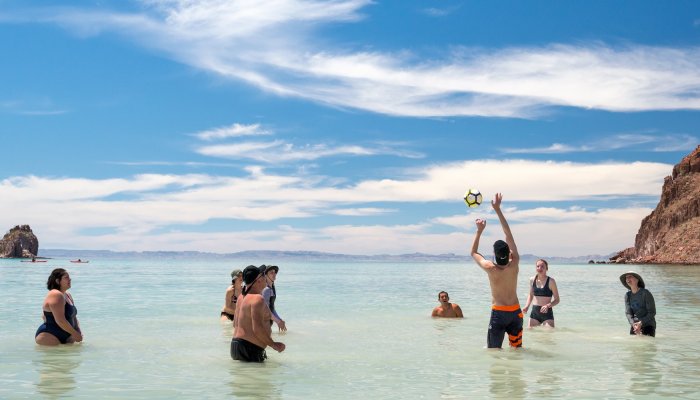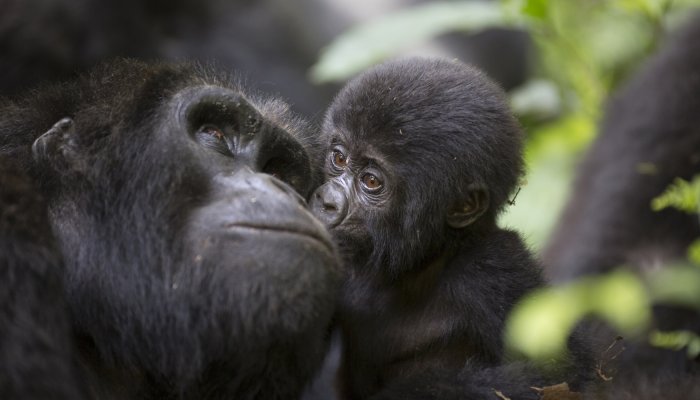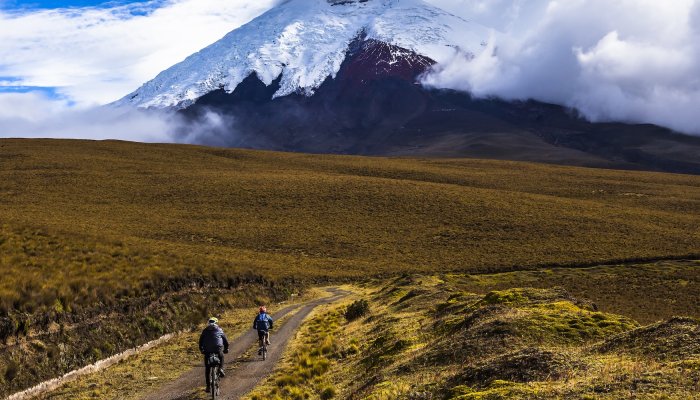Wildlife of Namibia
With its strikingly beautiful landscapes and soaring dunes, Namibia is one of Southern Africa’s most photogenic countries. But it’s also home to some of the continent’s most unique wildlife, which have adapted to thrive in the harsh, arid conditions of the Namib desert. While many of these species are genetically identical to their counterparts in neighboring countries, they have evolved special physical traits and behaviors that set them apart.
Our custom tours in Namibia offer a fascinating insight into this spellbinding country and the opportunity to spot some of its rare and endangered creatures in the wild.
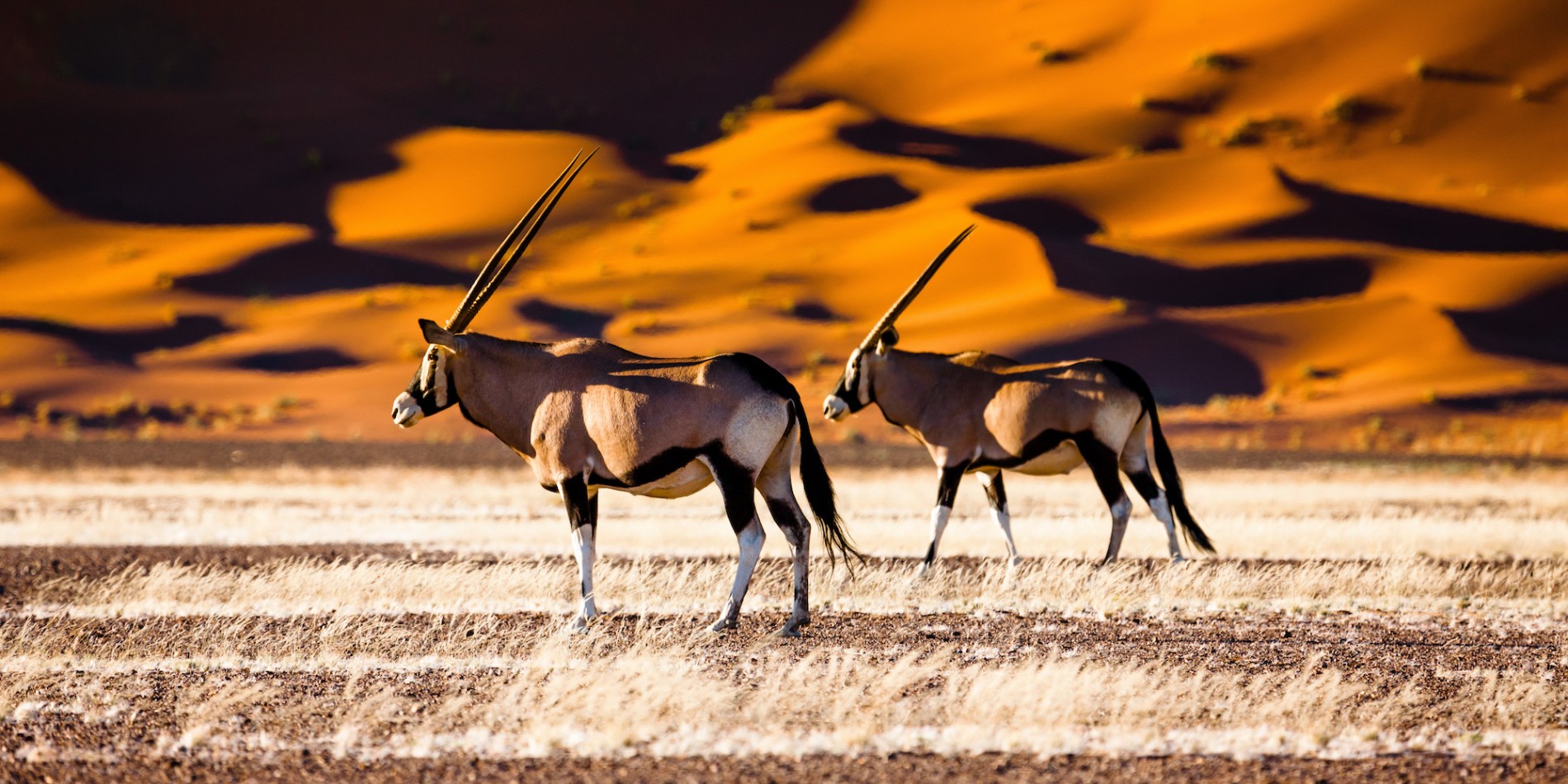
Oryx (Oryx gazella)
Instantly recognizable due to its black-and-white facial features and long, straight horns, the oryx is Namibia’s national animal. Around 373,000 individuals can be found throughout the country where they have adapted to survive in the harsh, arid terrain. Oryx have the ability to cool their blood as it flows to their brain and use their unique coloration to deflect heat away from their bodies. Namib-Naukluft National Park in the Namib Desert is one of the best places to spot oryx in the wild where they can be seen resting in shaded areas to escape the heat of the day.
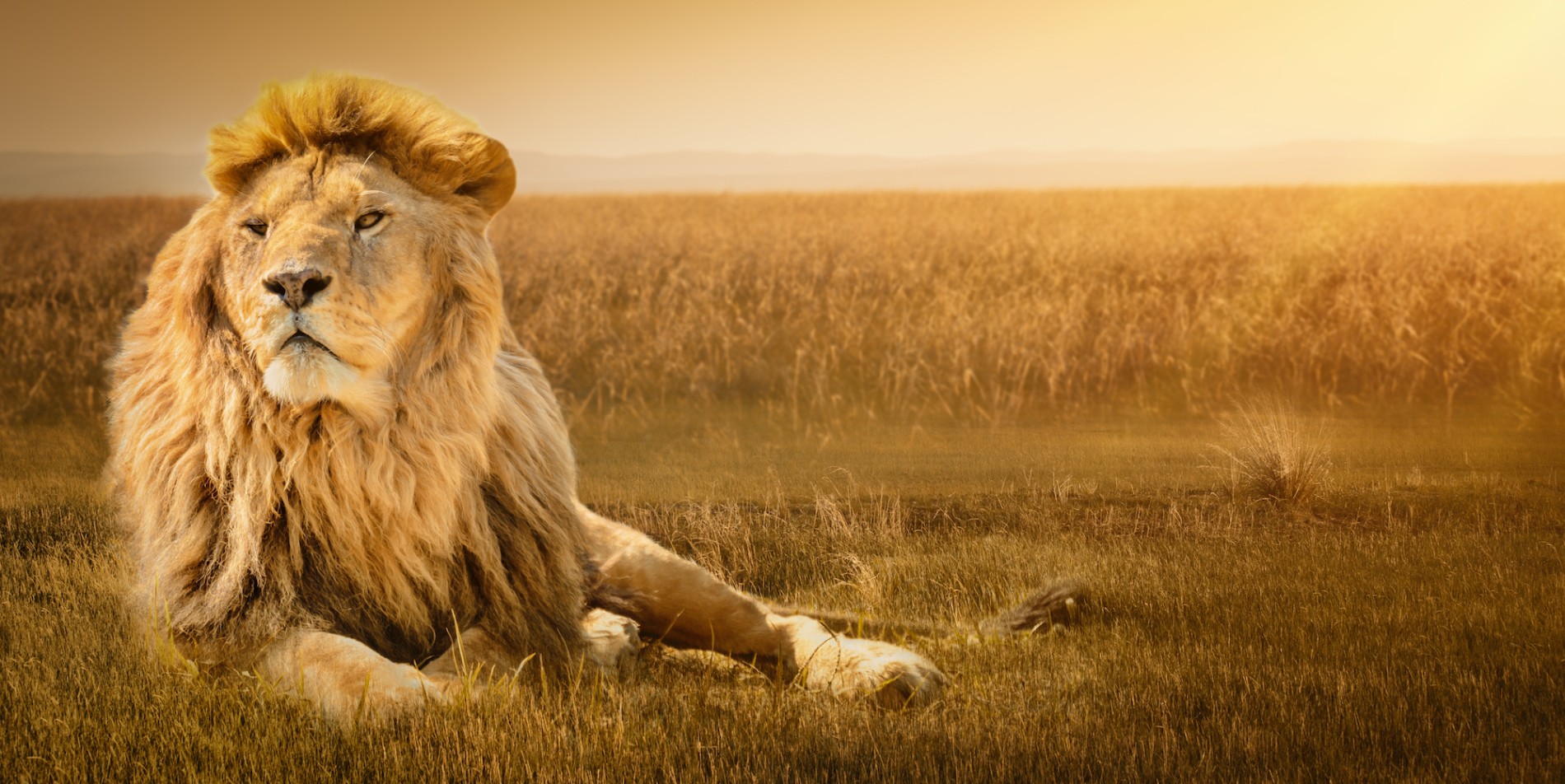
Lion (Panthera leo melanochaita)
Namibia’s desert-adapted lions differ from their bush-dwelling counterparts in that they can travel long distances without water (in fact, it is thought they obtain most of their moisture from prey, which includes giraffes, gemsboks, and ostriches). As a result, they tend to live in smaller prides and have larger home ranges, which include sand dunes and beaches where they hunt for seals. Desert-adapted lions can be found from Damaraland to the Skeleton Coast, although their numbers are severely threatened. Not-for-profits such as the Desert Lion Conservation Project are playing an important role in their survival, particularly in Northern Namib.
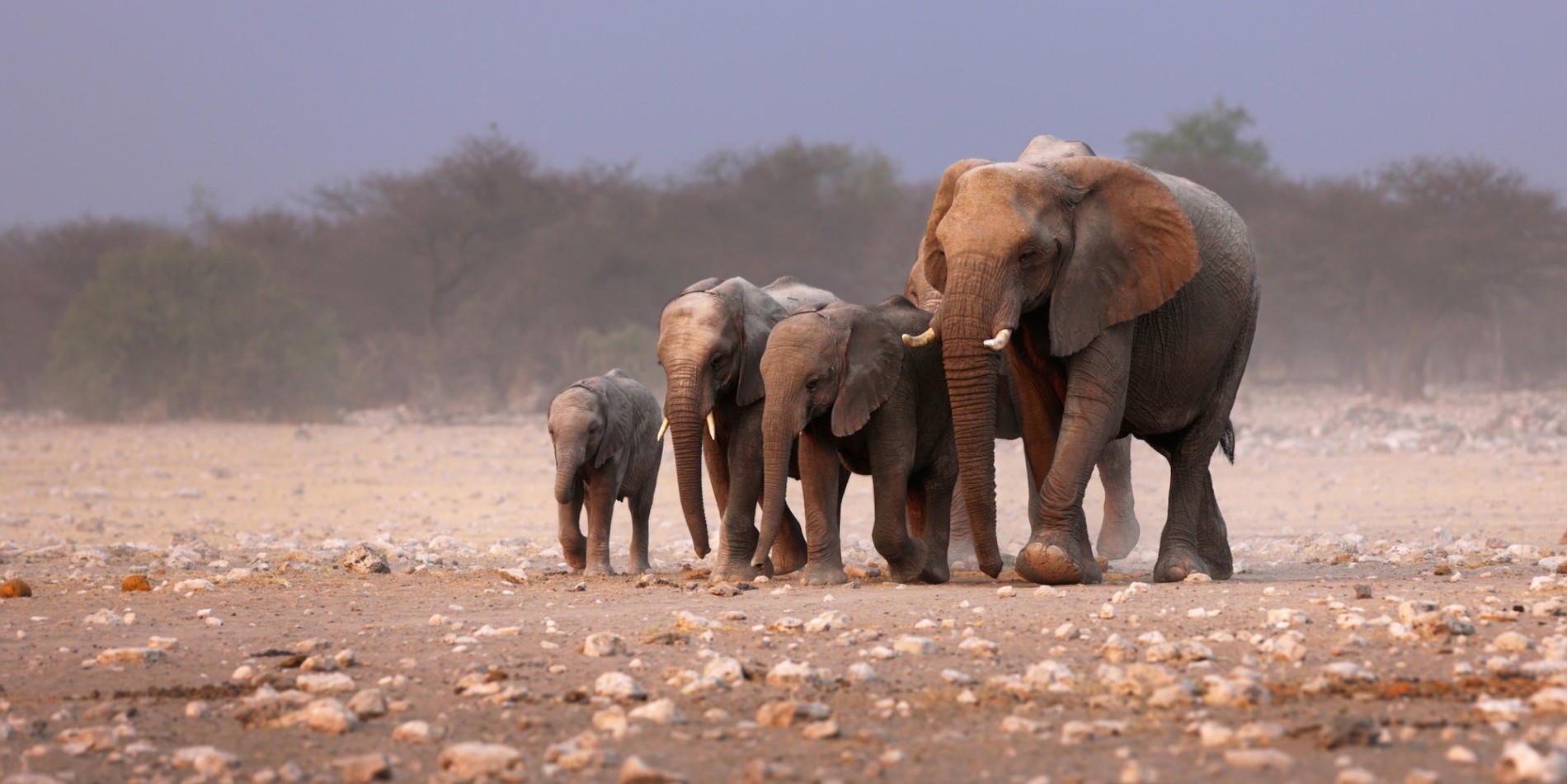
African bush elephant (Loxodonta africana)
Bigger in size than their Asian counterparts, African bush elephants can be found throughout sub-Saharan Africa. Namibia’s desert-dwelling elephants are unique in that they display learned behaviors and physical traits that enable them to survive in the country’s harsh, arid environment. They have evolved to have smaller bodies, longer legs, and larger feet, which provide them with better traction when traversing sandy terrain. They can also survive for days without water and are known to walk up to 70 kilometers a day in search of food. Unlike other African bush elephants, which tend to be destructive in their feeding habits, desert-dwelling elephants are gentler and avoid damaging trees to preserve their food supply. In Namibia, there are believed to be around 600 individuals, with Damaraland and Skeleton Coast National Park the best places to spot them.
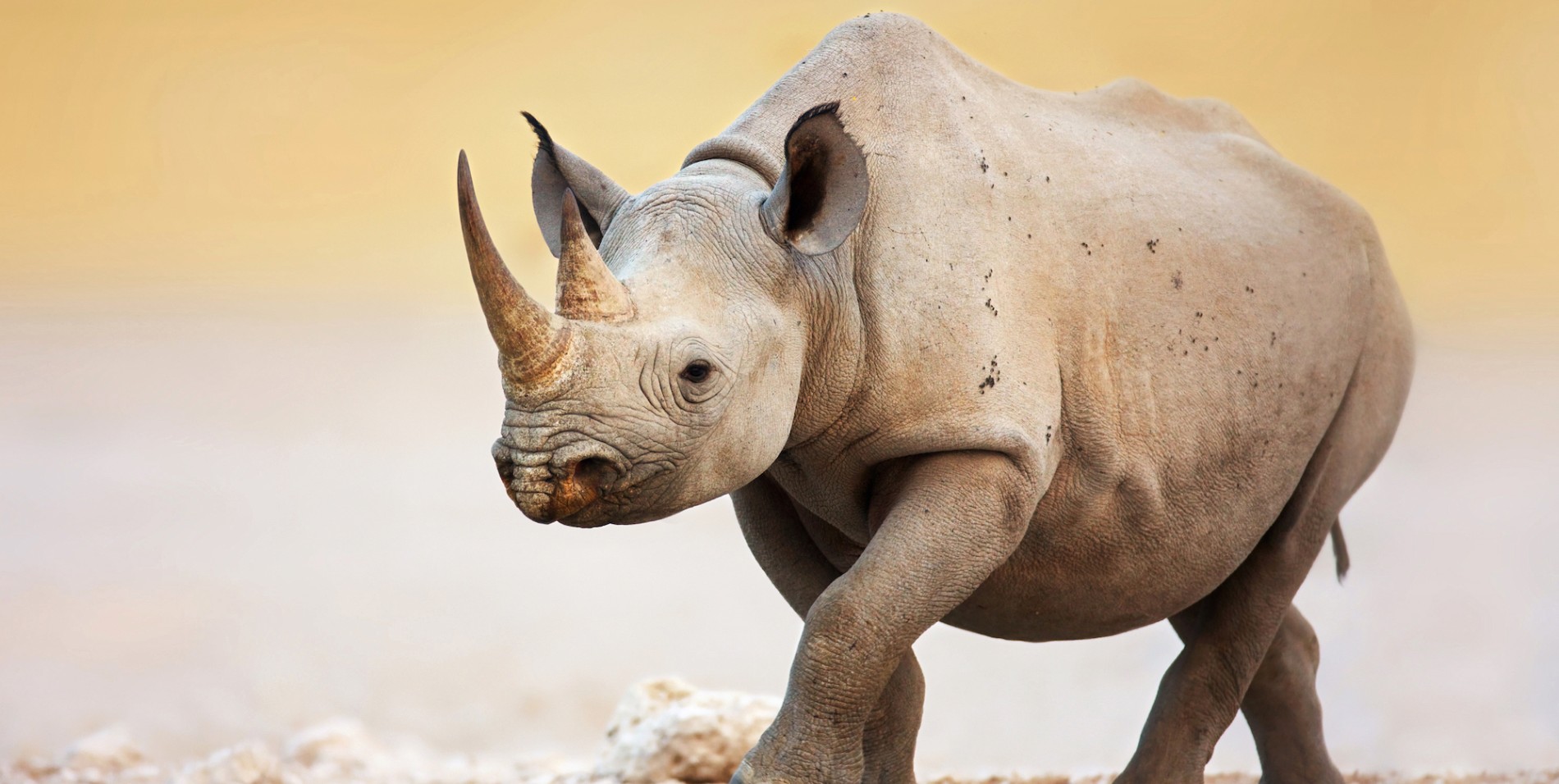
Black rhino (Diceros bicornis)
Differentiated from the white rhino by the shape of its hooked lips, the black rhino is critically endangered due to poaching and habitat reduction. That being said, Namibia is home to around 90% of southwestern black rhinos (one of several subspecies), which have adapted to survive in the country’s desert and semi-desert conditions. Southwestern black rhinos tend to be slightly larger than southern black rhinos, with big feet that enable them to negotiate the mountainous terrain of Damaraland. They can be found throughout the Kaokoveld, although their solitary lifestyle means they can be difficult to spot without the experience of a local guide.
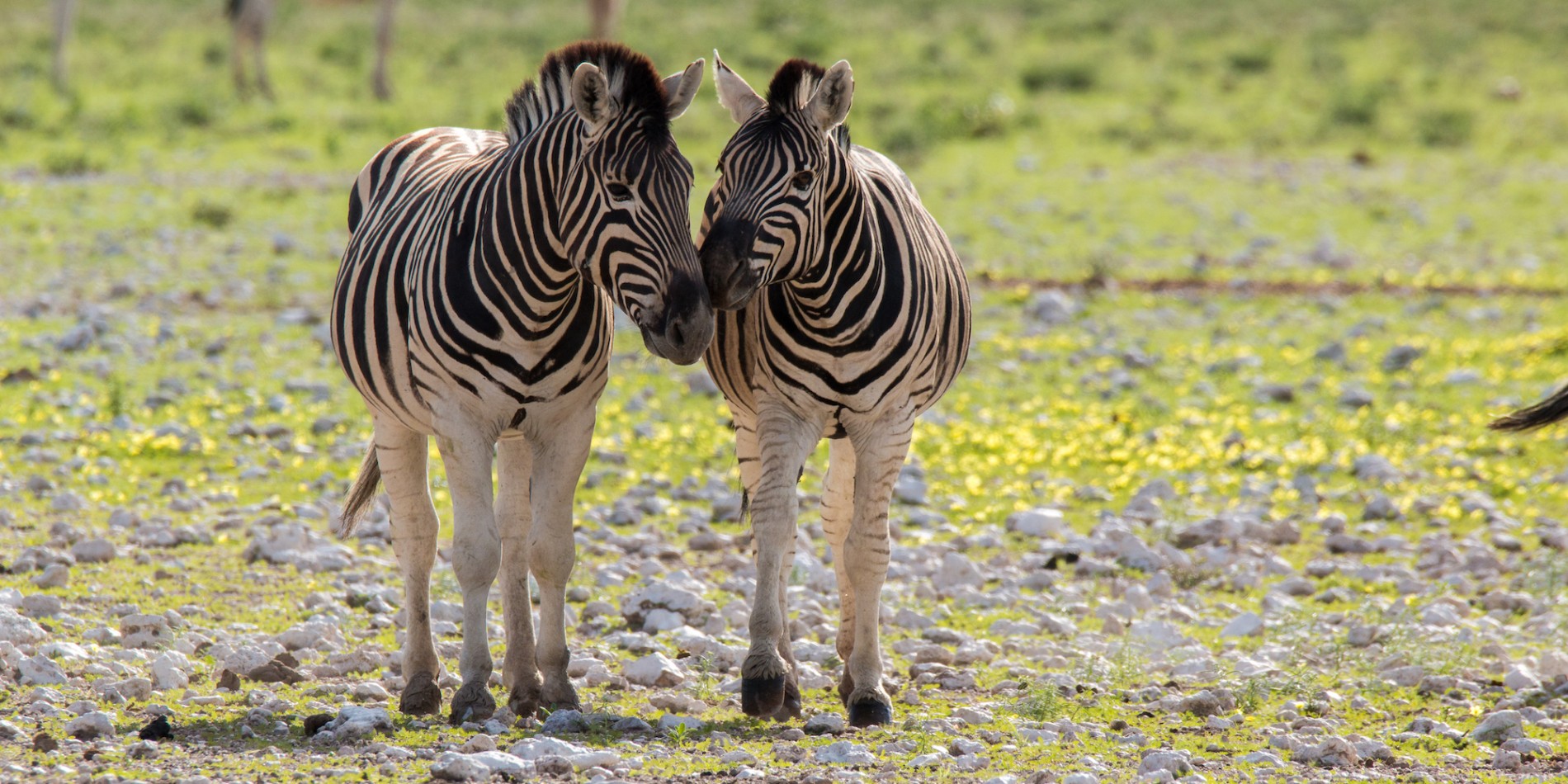
Zebra (subgenus Hippotigris)
Namibia is home to two of Africa’s four subspecies of zebra – Hartmann’s mountain zebras (Equus zebra hartmannae) and Burchell’s zebras (Equus quagga burchellii) - the latter of which has faint brown lines alongside its black stripes. Hartmann’s zebras are the only zebras with a dewlap fold of skin under their throats and have short, transverse stripes on their rump. In fact, many safari guides can tell individual zebras apart just by looking at their stripe patterns, which are as unique as fingerprints. While Burchell’s zebras are widespread throughout the country, Hartmann’s zebras are best observed amidst the rocky terrain of Etosha National Park or the mountainous landscapes of Namib-Naukluft National Park.
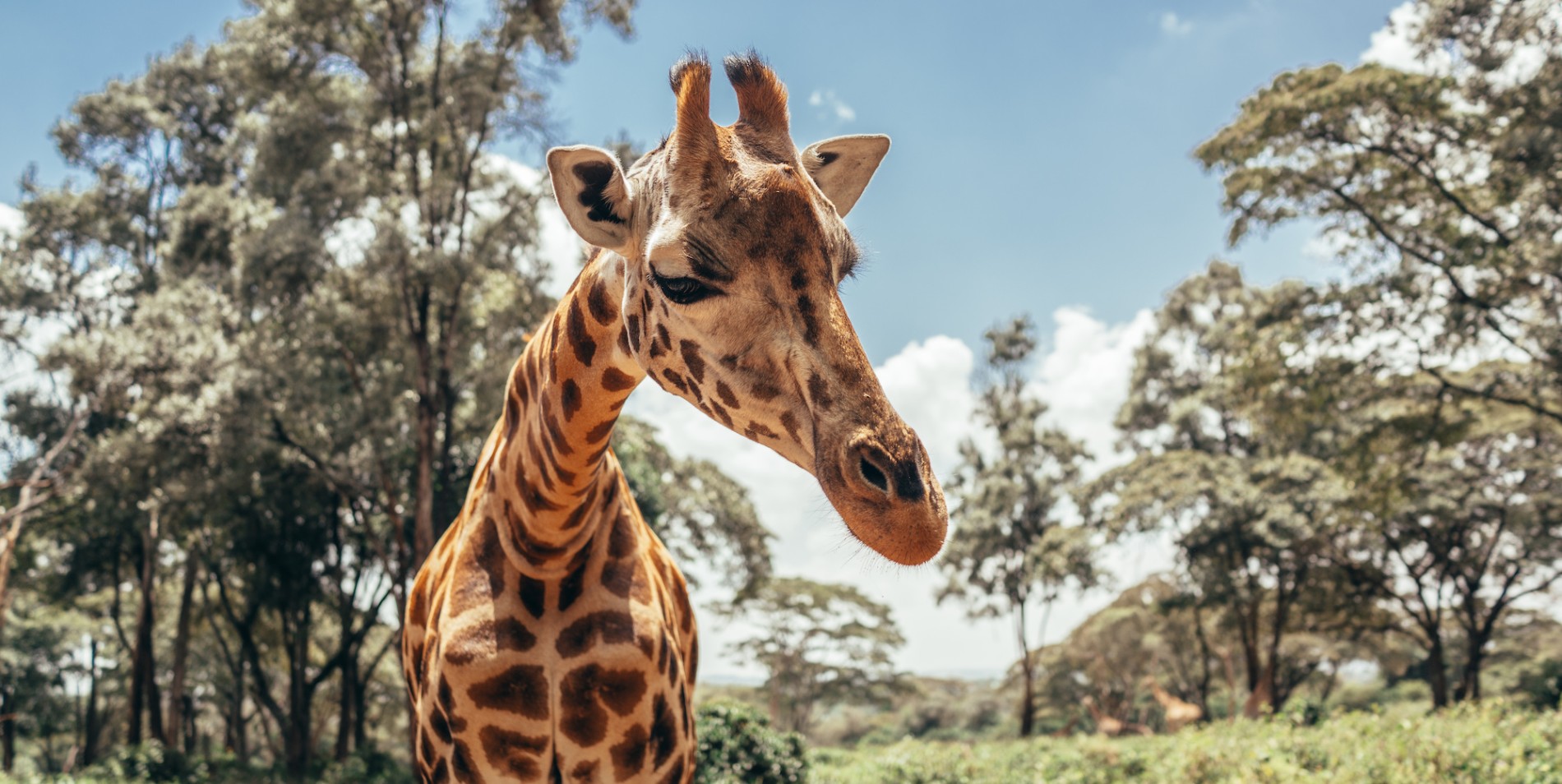
Namibian giraffes (Giraffa angolensis)
Also known as Angolan giraffes, Namibian giraffes are found throughout northern Namibia, Botswana, Zambia, and Zimbabwe, with recent studies suggesting the populations in the Namib Desert and Etosha National Park are in fact separate subspecies. They have large brown blotches with notched or angular edges, as well as white patches on their ears. Giraffes are well adapted for desert living, with the ability to close their nostrils to keep out sand and dust, and go for many weeks without having to drink water. Namibian giraffes are easily spotted in Etosha National Park, as well as in the private game reserves of Damaraland and Kaokoland.
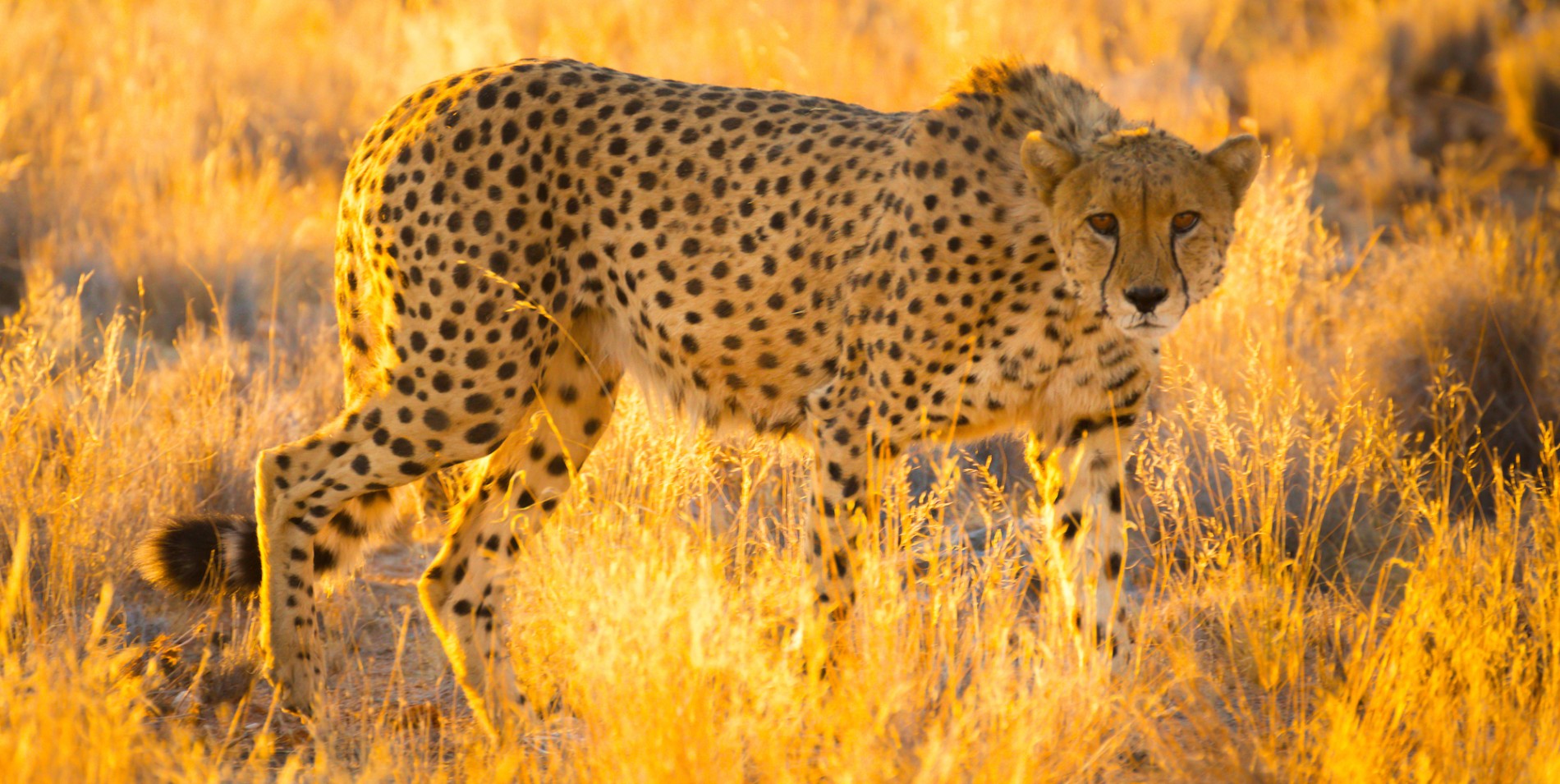
Southeast African cheetah (Acinonyx jubatus jubatus)
Interestingly, Namibia’s cheetahs are more commonly found outside of protected areas on rural farmlands, although they are known to occur in Namib-Naukluft National Park, Bwabwata National Park, and the Naankuse Wildlife Sanctuary. Highly elusive, these medium-sized cats feature golden coats with dense spots and white undersides, as well as brown “mustaches”. More than 3,500 cheetahs reside in Namibia today, meaning the country has the largest population of wild cheetahs anywhere in the world. Namibia is also the birthplace of the Cheetah Conservation Fund, which was established in 1990 to help save Africa’s wild cheetah populations.
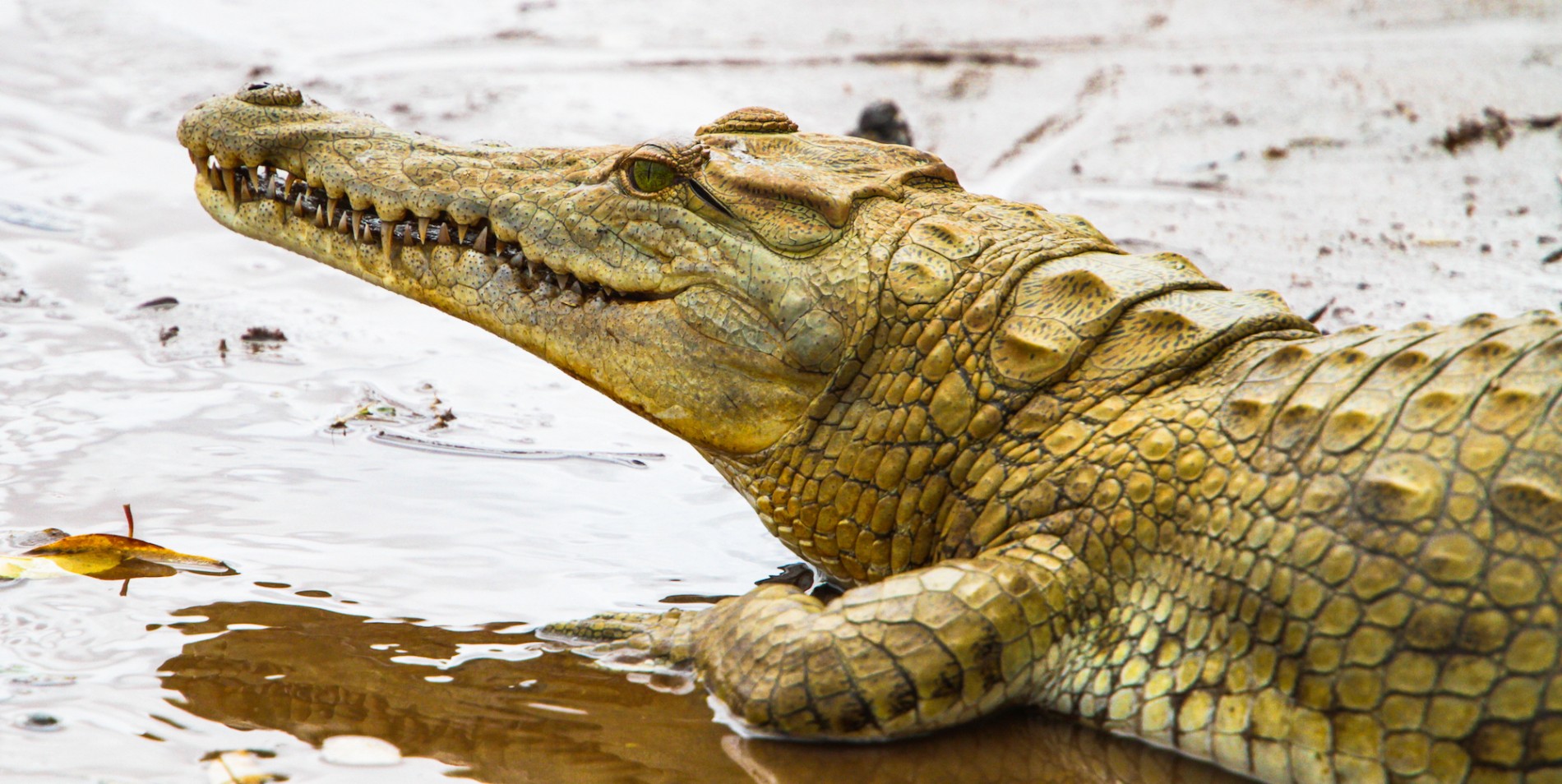
Nile crocodile (Crocodylus niloticus)
Native to freshwater habitats, Nile crocodiles can be found in 26 countries across Africa, including Namibia. It’s one of the largest extant reptiles in the world and is highly aggressive, with a variety of mammals, birds, and fish as its prey. Nile crocodiles are known to wait for long periods of time before ambushing their prey, which they hold underwater in their powerful jaws. River banks and swamps are the best places to spot these creatures where they are known to bask in the sunshine.
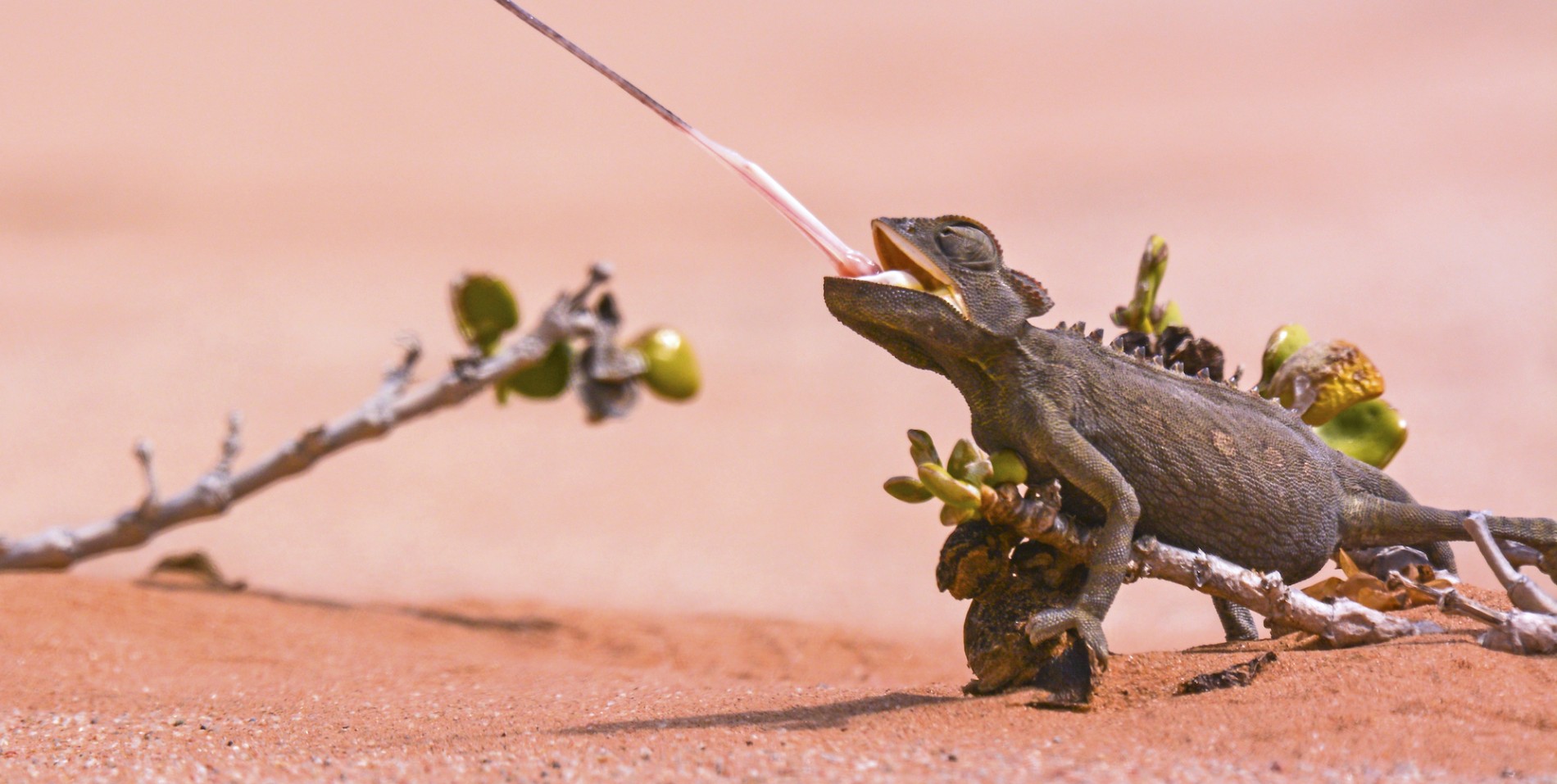
Flap-necked chameleon (Chamaeleo dilepis)
Named after the flaps that are present on its back, this relatively large chameleon can grow up to 14 inches (35 centimeters) in length. They range in color from green to yellow and brown, with a pale stripe visible on its lower flanks. It’s when threatened that the flap-necked chameleon comes to life, with its body inflating, its throat extending, and its flaps opening to reveal a red-orange lining. Etosha National Park is one of the best places to encounter these fascinating creatures, which are easier to spot at night when they turn a bluish-white.
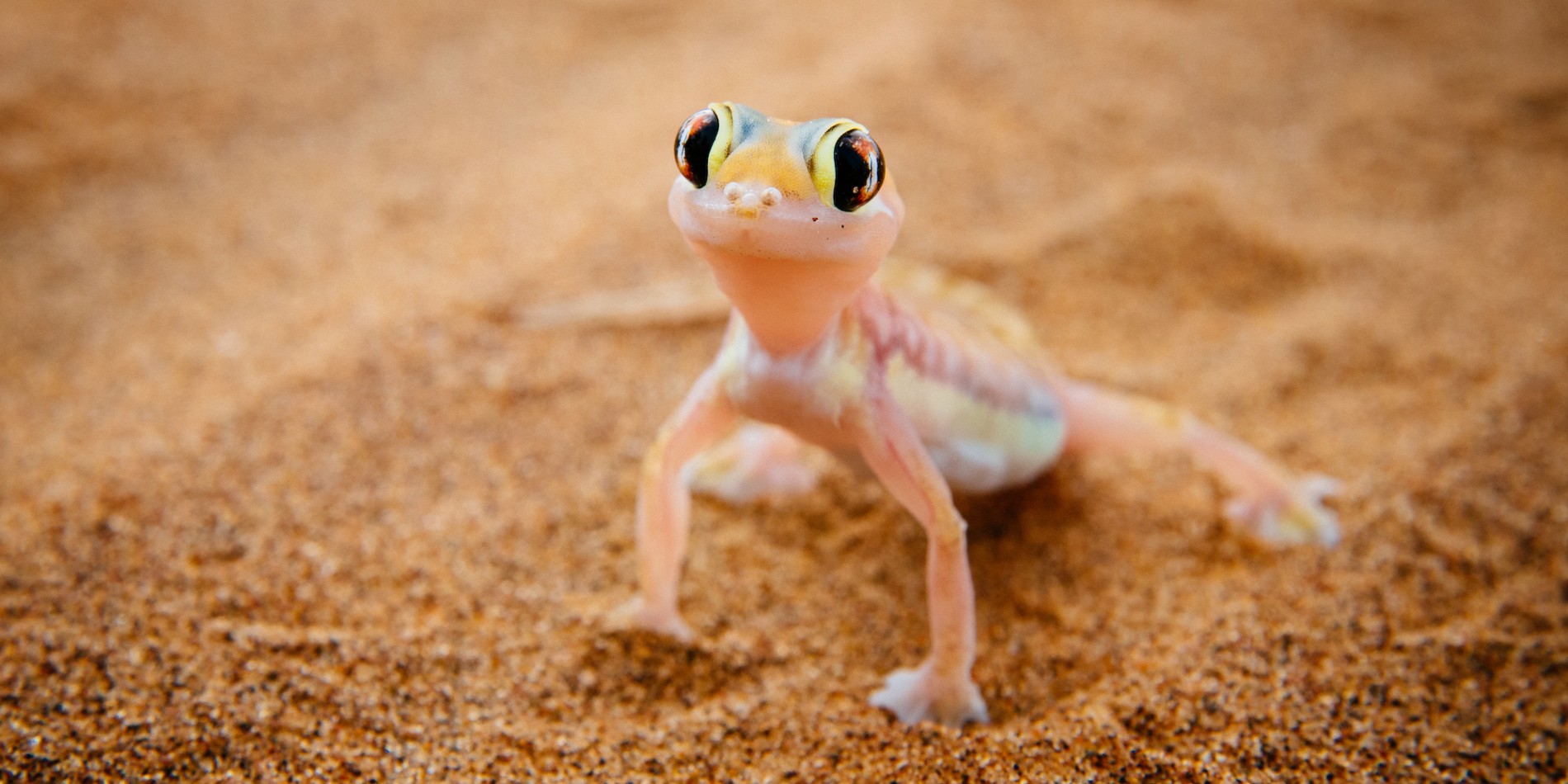
Namib sand gecko (Pachydactylus rangei)
Growing to around 5 inches (13 centimeters) in length, the Namib sand gecko is a web-footed lizard that is endemic to the Namib Desert. It is pale (almost translucent) in color, to the point that its internal organs can be seen through its scaly skin. Namib sand geckos prefer to live amidst rocks and sand dunes where they spend their days burrowed in holes before coming out to feed at night. To differentiate the sexes, look for the width of the tail, which is thicker in males than females.
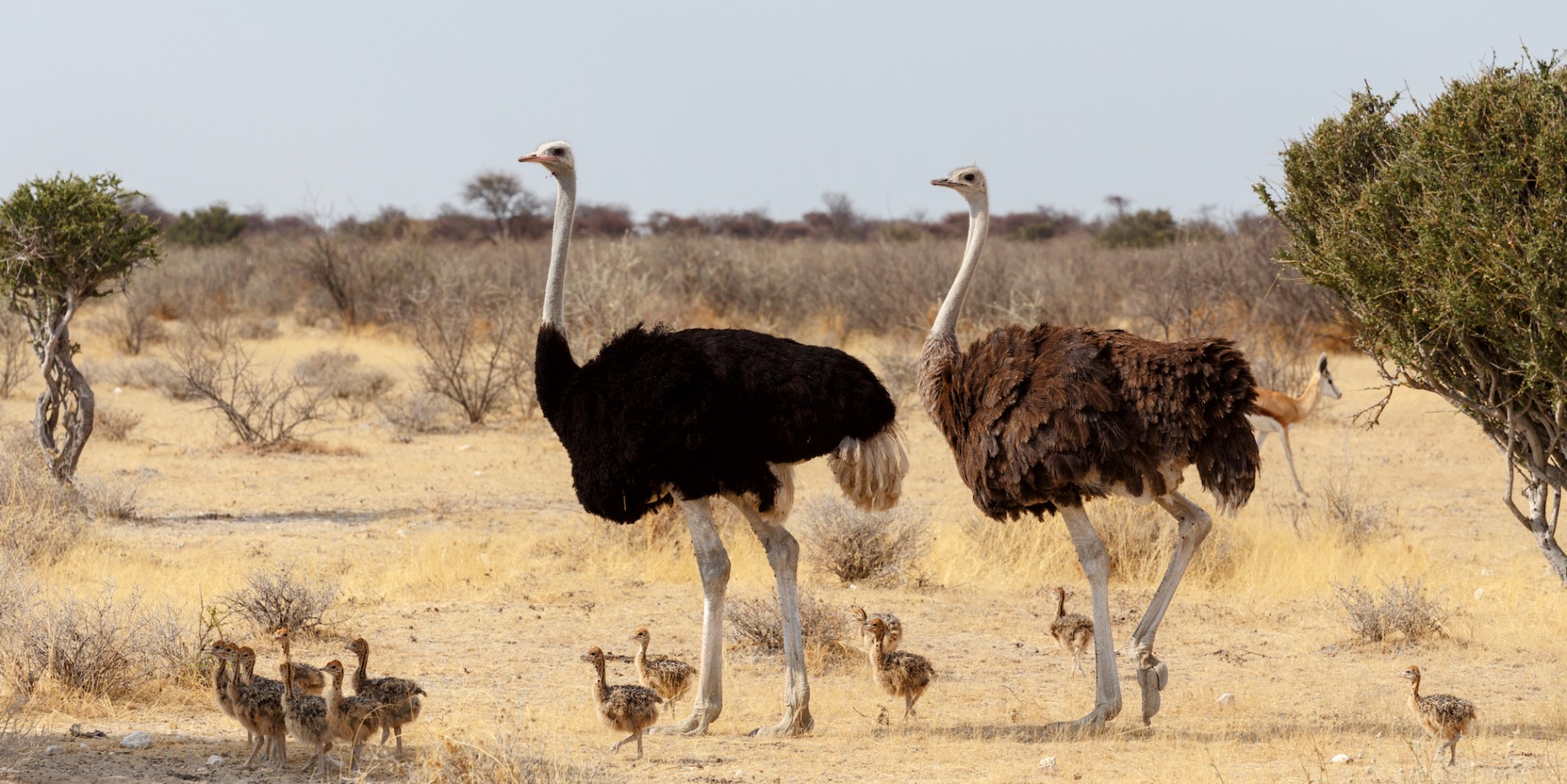
South African ostrich (Struthio camelus australis)
Also known as the black-necked ostrich, this subspecies is found throughout Namibia, South Africa, and Botswana, as well as in Malawi, Zambia, Zimbabwe, and Angola. They are particularly well adapted to surviving in the hot and dry conditions of Namibia as they can go for long periods without water. While ostriches are flightless birds, they are surprisingly fast on land and can reach speeds of up to 45 miles per hour (72 kilometers per hour). In Namibia, ostriches are best spotted in Etosha National Park, the Kalahari Desert, and the Namib Desert, as well as in the Caprivi Strip.
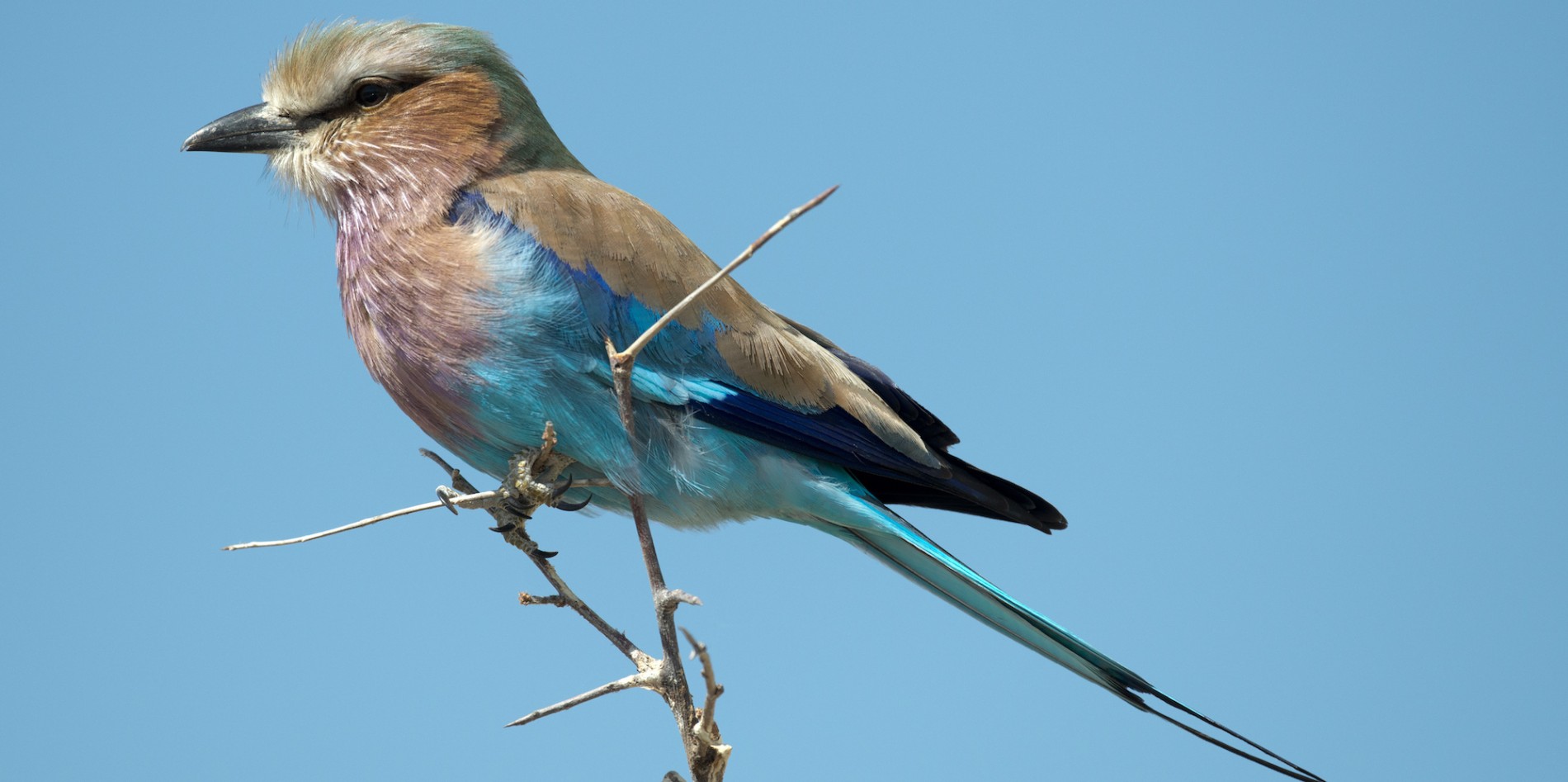
Lilac-breasted roller (Coracias caudatus)
Widely seen across Southern and Eastern Africa, the lilac-breasted roller is a beautifully colored bird that can be found alone or in pairs at the tops of trees. They are common in Namibia (although not in the Namib Desert) and distinguish themselves by their harsh "rak rak rak” call. Unlike some species, male and female lilac-breasted rollers have the same hue, color, and plumage, which means it can be difficult to tell them apart. Juveniles, however, lack the long tail streamers that are visible on adults.
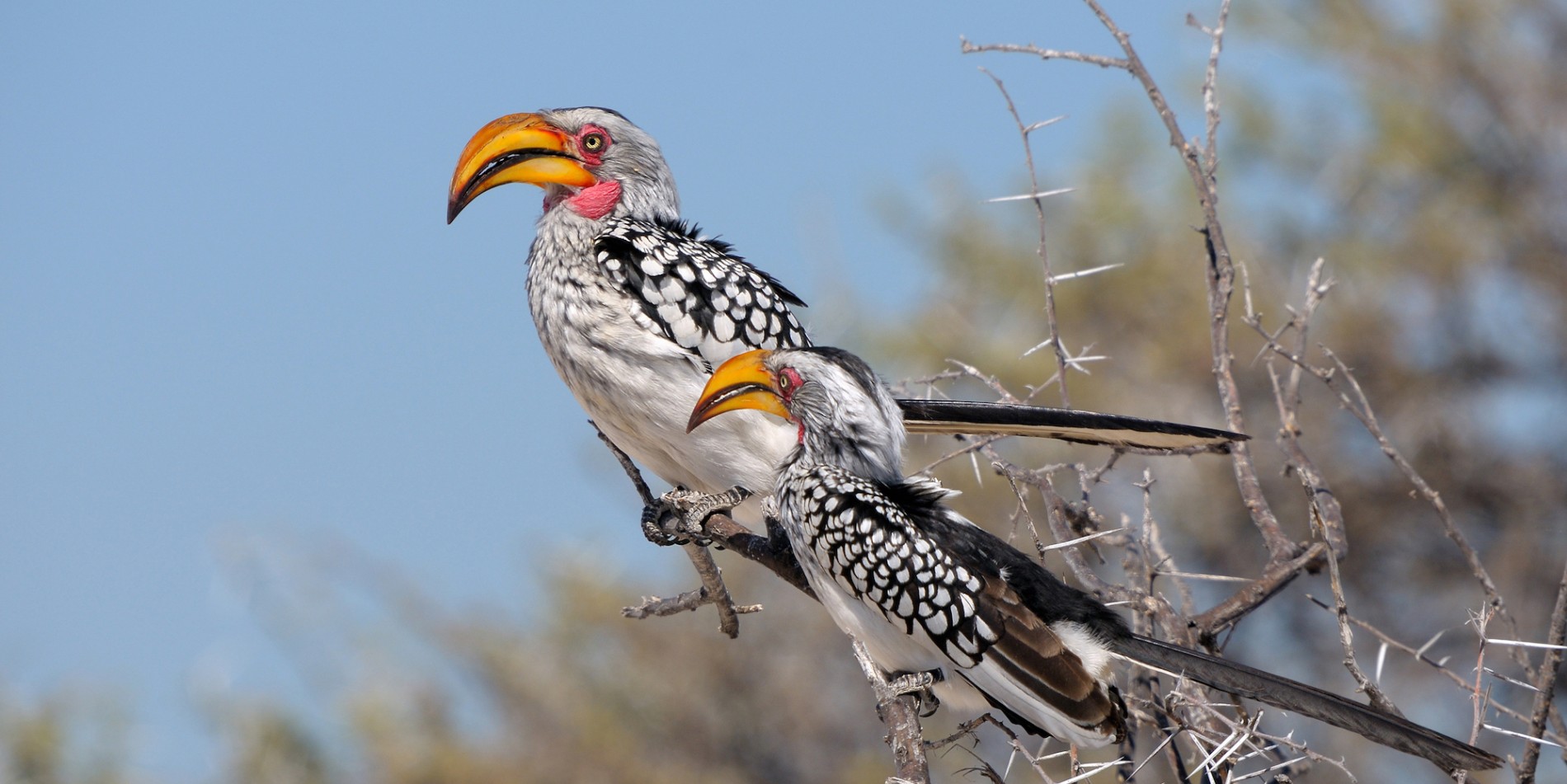
Southern yellow-billed hornbill (Tockus leucomelas)
Instantly recognizable due to their yellow bills, these medium-sized hornbills are endemic to the dry savannahs of southern Africa. While they prefer open terrain, they are also known to inhabit acacia and broad-leafed woodlands where they forage for seeds and small insects. The beaks of southern yellow-billed hornbill comprise around 1/6th of the body length, with those of males usually longer than those of females. While their backs are black with white spots and stripes, the necks of these hornbills are grey with a white underbelly. Southern yellow-billed hornbills are active during the daytime before finding a high tree branch to sleep safely at night.
An African safari like no other
Whether you’re a first-time traveler to Africa or looking for a unique adventure on the continent, Namibia is calling. Its protected areas provide habitat for a huge diversity of wildlife, backed by landscapes that have to be seen to be believed.
Safari tourism plays an important role in ensuring the long-term survival of the country’s desert-adapted species, some of which are found nowhere else on Earth. Our custom tours in Namibia are a safe and responsibly-run way of exploring this magnificent corner of the globe, with some of the country’s most experienced guides leading the way.
To learn more about the threats to Namibia’s wildlife and what you can do to help, please visit the WWF website.


